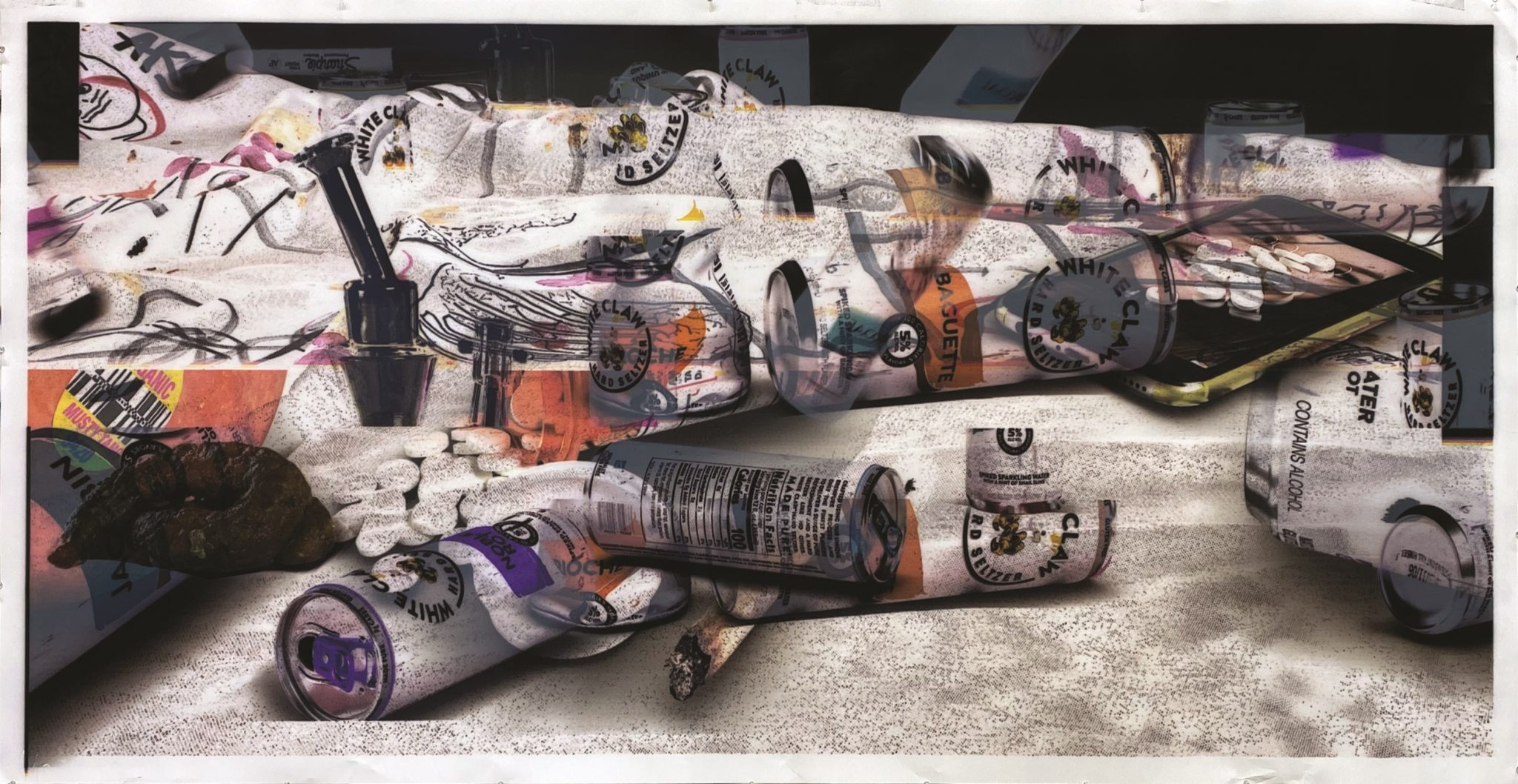Avery Singer’s art practice is a unique blend of both historical and contemporary subject matter, made with both old and new techniques. Her painted works involve a mix of 3D-modeling software, airbrush painting, and her unique use of liquid rubber as a masking material that allows her to remove or fragment parts of the image after it’s been painted. China Chalet (Study) is a work on paper connected to a large work on canvas of the same name. Singer describes the work:
That painting is named after a club that I frequented in my twenties. It closed during the pandemic. The painting represents the end of an era of partying downtown. I wanted to memorialize it in a work. You could still smoke inside that club, even though it was banned in regular places. You’d walk in and people would be sitting at tables with white tablecloths, smoking and spilling things on the white fabric, staining them. I wanted an image of a white tablecloth with drugs and alcohol, even human feces on it. […] The ‘White Claw’ beverages that are depicted – no one would have ever had them at that club, because it wasn’t served there. But now is the time of White Claw. It’s what I see everyone drinking. I took the can and I started giving it flavors from Robespierre’s time, which I thought would be kind of humorous, to see an 18th-century variety-pack of flavors, flavors you wouldn’t encounter today.
Taken as a whole, Singer’s tableau reads as a contemporary vanitas painting that plays on romantic notions of drinking, drugs, and a carefree, bohemian lifestyle. And though the imagery is decidedly common, the work itself feels especially poignant in the midst of an era defined by death and a particularly fragile understanding of time. Singer’s work is in numerous museum collections, among them the Art Institute of Chicago; Bass Museum, Miami Beach; Boros Collection, Berlin; Carnegie Museum of Art, Pittsburgh; Fondazione Sandretto Re Rebaudengo, Turin; Hammer Museum, Los Angeles; Hirschhorn Museum, Washington, DC; Kistefosmuseum, Norway; LACMA, Los Angeles; Minneapolis Institute of Art; MoMA, New York; Museum Ludwig, Cologne; Stedelijk Museum, Amsterdam; Tate Modern, London; The Metropolitan Museum of Art, New York; and the Whitney Museum, New York.
